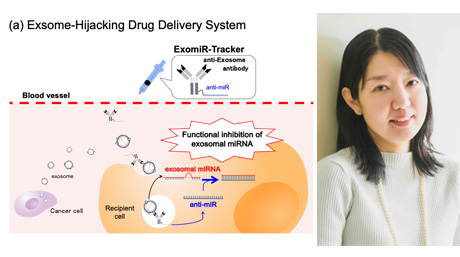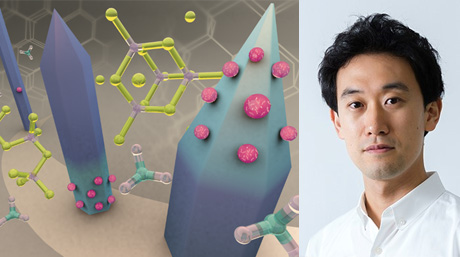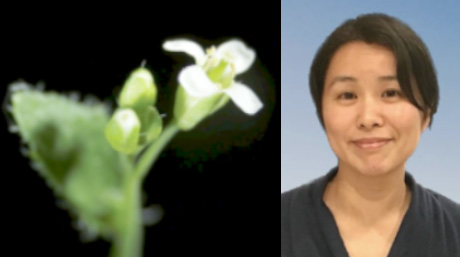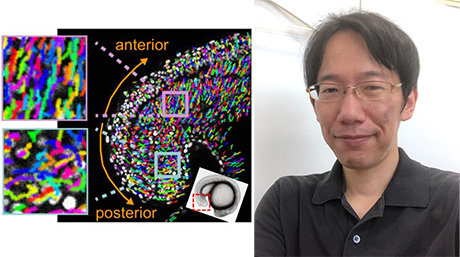Life Science and Technology News
【Labs spotlight】 Mikiko Tanaka Laboratory
Developmental basis of morphological changes during vertebrate evolution.
※ January 26, 2022:Updated to the latest information.
Our laboratory is interested in understanding the molecular genetic mechanisms of how vertebrates acquired novel structures during evolution. Our particular interest is to understand the fundamental body plan in relation to the formation of fins and limbs from an evolutionary perspective.
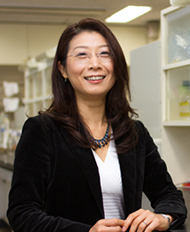
Areas of Supervision
Primary/Life Science and Technology
Professor Mikiko Tanaka![]()
| Degree |
|
|---|---|
| Areas of Research | Developmental Biology, Evolutional Biology, Morphogenesis, Organogenesis |
| Keywords | Evolutionary developmental biology, Morphology, Organogenesis. |
| Website | TANAKA Lab |
Awards and Honors
| 2010 | Young Scientist Initiative Award, Society of Evolutionary Studies, Japan |
|---|---|
| 2006 | The Young Scientist's Prize, The Commendation for Science and Technology by the Minister of Education, Culture, Sports, Science and Technology |
| 2006 | Kenjiro Nakamura Prize, Tejima Seiichi Commemorative Foundation |
| 2005 | Young Scientist Initiative Award, The Zoological Society of Japan |
| 2004 | Challenging Research Award, Tokyo Institute of Technology |
| 1998 | Inoue Research Award for Young Scientists, Inoue Foundation for Science |
Research interest
Oxygen shapes arms and legs
The webbing between the fingers of some animals – the interdigital membranes – is formed in different ways across species. In collaboration with Dr. J. Hanken’s group (Harvard Univ.), we found that removal of the interdigital membrane by cell death depends on the production of reactive oxygen species, which only occurs in embryos exposed to a high oxygen concentration during development. This work gives an interesting example of how novel strategies to shape the body parts may appear during development, linking ecology and evolution of the limb shape (Cordeiro et al., 2019 Dev Cell).
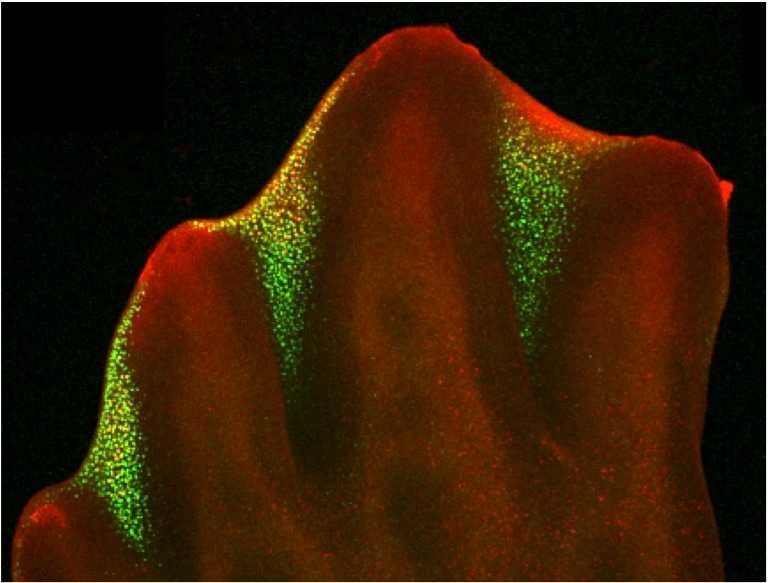
Basis of Development of Vertebrate Limb Muscles has been established in Cartilaginous Fishes
The development of limb muscle has been well studied in most land dwelling vertebrates such as humans and modern research models. In these species, muscle precursors, or cells that will form limb muscle, travel to the limb bud, a location in the developing embryo where they multiply and form muscle tissue under the control of genes that coordinate limb- muscle formation, such as Lbx1. It has been shown that this mechanism of development is shared with bony but not with cartilaginous fish. Using catshark embryos, we confirmed that Lbx1-positive cells are found in cartilaginous fish fin as well as in hypobranchial muscles, and that these are formed via the mechanism that has been established in land dwelling vertebrates as well as in bony fish (Okamoto et al., 2017 Nature Ecol Evol).
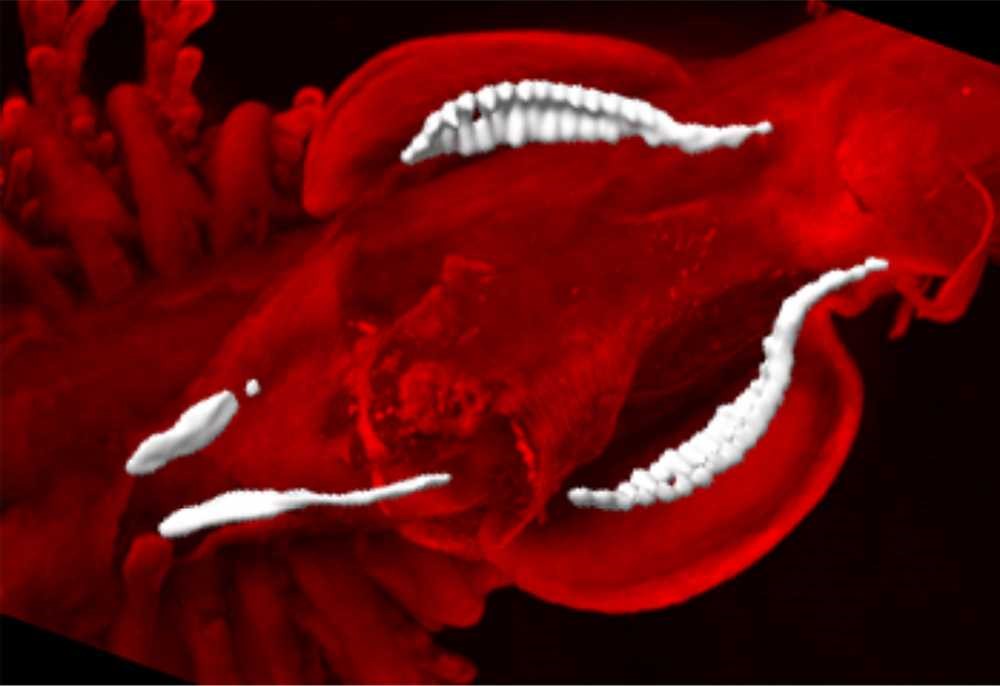
Key genetic event underlying fin-to-limb evolution
The first four-legged, land-living creatures—known as early tetrapods—evolved from fish, following the transformation of fins into limbs. This fin-to-limb evolution is a crucial, yet so far unsolved, example of how morphological changes can dramatically alter life on Earth. In collaboration with Dr. J. Sharpe’s group (CRG), we have revealed how genetic alterations governing the patterning of skeletal structures in fins may have led to the evolution of limbs and the rise of early tetrapods(Onimaru et al., 2015 eLife; Onimaru et al., 2016 Nat Commun).

Research findings
Selected publications
-
- 1.Ingrid Rosenburg Cordeiro, Kaori Kabashima, Haruki Ochi, Keijiro Munakata, Chika Nishimori, Mara Laslo, James Hanken, and Mikiko Tanaka (2019). Environmental oxygen exposure allows for the evolution of interdigital cell death in limb patterning. Dev Cell 50, 155-166.
- 2.Kenta Kawahata*, Ingrid Rosenburg Cordeiro*, Shogo Ueda, Guojun Sheng, Yuuta Moriyama, Chika Nishimori, Reiko Yu, Makoto Koizumi, Masataka Okabe, and Mikiko Tanaka (2019). Evolution of the avian digital pattern. Sci Rep 9, article number 8560.
- 3.Eri Okamoto, Rie kusakabe, Shigehiro Kuraku, Susumu Hyodo, Alexandre Robert-Moreno, Koh Onimaru, James Sharpe, Shigeru Kuratani, Mikiko Tanaka (2017). Migratory appendicular muscles precursor cells in the common ancestor to all vertebrates Nature Ecol Evol1, 1731-1736.
- 4.Koh Onimaru, Luciano Marcon, Marco Musy, Mikiko Tanaka, James Sharpe (2016). The fin to limb transition as the re-organisation of a Turing pattern. Nat Commun 7, Article number 11582
- 5.Mikiko Tanaka (2016). Fins into limbs: autopod acquisition and anterior elements reduction by modifying gene networks involving 5’Hox, Gli3 and Shh. Dev Biol 413, 1-7
- 6.Koh Onimaru, Shigehiro Kuraku, Wataru Takagi, Susumu Hyodo, James Sharpe and Mikiko Tanaka (2015). A shift in anterior-posterior positional information underlies the fin-to-limb evolution. eLife
- 7.Natsuno Suda, Takehiko Itoh, Ryuichiro Nakato, Daisuke Shirakawa, Masashige Bando, Yuki Katou, Kohsuke Kataoka, Katsuhiko Shirahige, Cheryll Tickle and Mikiko Tanaka (2014). Dimeric combinations of MafB, cFos and cJun control the apoptosis-survival balance in limb morphogenesis. Development 141, 2885-2894.
- 8.Koh Onimaru*, Eiichi Shoguchi, Shigeru Kuratani and Mikiko Tanaka* (2011). Development and evolution of the lateral plate mesoderm: Comparative analysis of amphioxus and lamprey with implications for the acquisition of paired fins. Dev Biol 359, 124-136.
- 9.Yasunori Murakami* and Mikiko Tanaka* (2011). Evolution of Motor innervation to fins and limbs. Dev Biol 355, 164-172.
- 10.Yumie Murata*, Mika Tamura*, Yusuke Aita, Yasunori Murakami, Koji Fujimura, Masataka Okabe, Norihiro Okada and Mikiko Tanaka (2010). Allometric growth of the trunk leads to the rostral shift of the pelvic fin in teleost fishes. Dev Biol 347, 236-245.
- 11.Megan G Davey, I Robert Paton, David R Morrice, Yili Yin, Maike Schmidt, Paul Buxton, Despina Stamataki, Mikiko Tanaka, Andrea E Munsterberg, James Briscoe, Cheryll Tickle and Dave W Burt (2006). The Chicken talpid3 gene encodes a novel protein essential for hedgehog signaling. Genes Dev 20, 1365-1377.
- 12.Mikiko Tanaka, Laura A Hale, Angel Amores, Yi-Lin Yan, William A Cresko,Tohru Suzuki and John H Postlethwait (2005). Developmental genetic basis for the evolution of pelvic fin loss in the pufferfish Takifugu rubripes. Dev Biol 281, 227-239
- 13.Mikiko Tanaka and Cheryll Tickle (2004). Tbx18 and boundary formation in chick somite and wing development. Dev Biol 268, 470-480.
- 14.Nicholas Cole, Mikiko Tanaka, Alan R Prescott and Cheryll Tickle (2003). Expression of limb initiation gene and clues to the basis of morphological diversification of three-spine sticklebacks. Curr Biol 13, R951-R952.
- 15.Mikiko Tanaka, Andrea Munsterberg, W Gary Anderson, Alan R Prescott, Neil Hazon and Cheryll Tickle (2002). Fin development in a cartilaginous fish and the origin of vertebrate limbs. Nature 416, 527-531.
- 16.Maike Schmidt, Mikiko Tanaka and Andrea Munsterberg (2000). Expression of (beta)-catenin in the developing chick myotome is regulated by myogenic signals. Development 127, 4105-4113.
- 17.Mikiko Tanaka, Martin J Cohn, Peter Ashby, Megan Davey, Paul Martin and Cheryll Tickle (2000). Distribution of polarizing activity and potential for limb formation in mouse and chick embryos and possible relationship to polydactyly. Development 127, 4011-4021.
- 18.Masakazu Yamamoto, Yoshihiro Gotoh, Koji Tamura, Mikiko Tanaka, Atsushi Kawakami, Hiroyuki Ide and Atsushi Kuroiwa (1998). Coordinated expression of Hoxa-11 and Hoxa-13 during limb muscle patterning. Development 125, 1325-1335.
- 19.Mikiko Tanaka, Koji Tamura, Sumihare Noji, Tsutomu Nohno, and Hiroyuki Ide (1997). Induction of additional limb at the dorsal-ventral boundary of a chick embryo. Dev Biol 182, 191-203
- 20.Mikiko Tanaka, Koji Tamura, and Hiroyuki Ide (1996). Citral, an inhibitor of retinoic acid synthesis, modifies chick limb development. Dev Biol 175, 239-247.
- Research Laboratories and Subjects
- Oxygen shapes arms and legs: origins of a new developmental mechanism called "interdigital cell death" | Life Science and Technology News
- Basis of Development of Vertebrate Limb Muscles has been established in Cartilaginous Fishes | Life Science and Technology News
- From fins to limbs: Unravelling the mystery of evolutionary morphology | Tokyo Tech News
Contact
Professor Mikiko Tanaka
Room 715, B1 building, Suzukakedai campus
E-mail : mitanaka@bio.titech.ac.jp
*Find more about the lab and the latest activities at the lab site![]() .
.
*May 1, 2025:Some of the content has been updated with the latest information.

